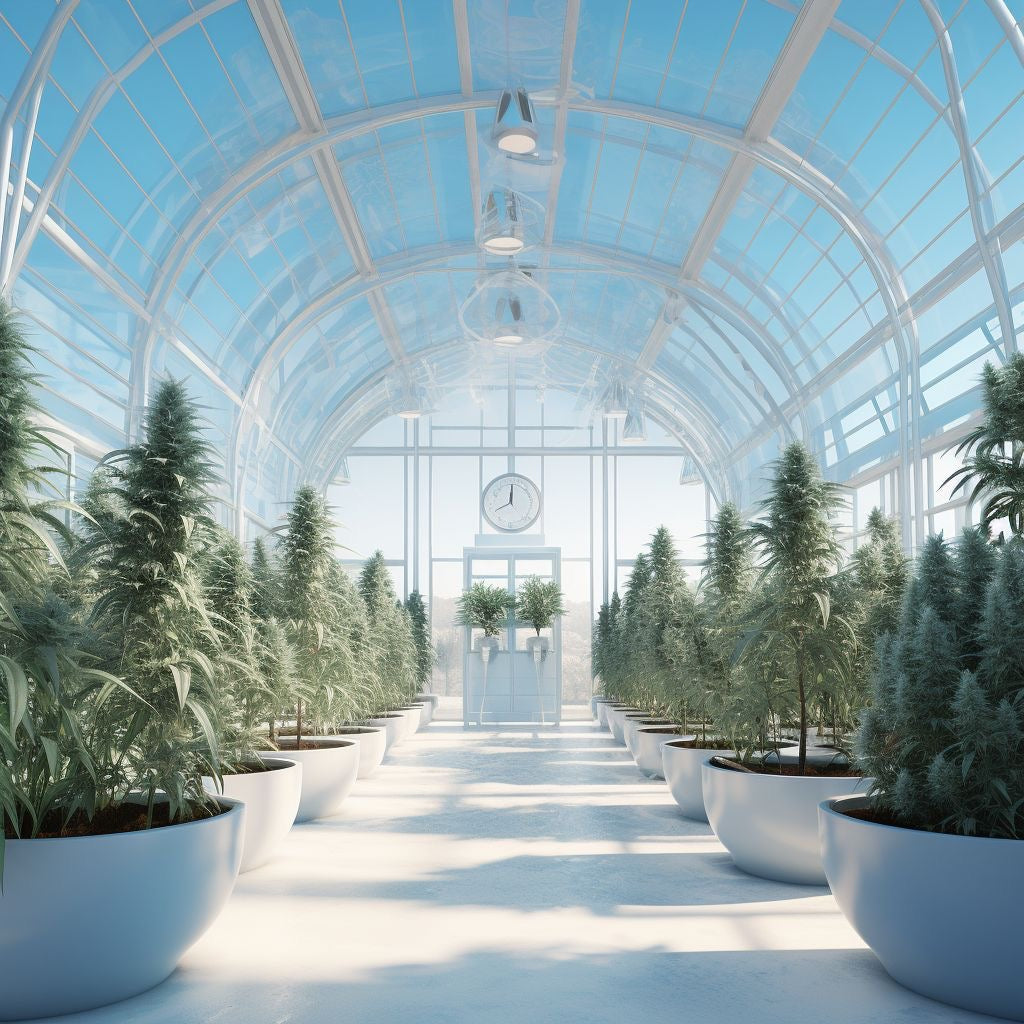Your personal Cannabis sativa cultivation: Tips for a successful start

Growing Cannabis sativa in private settings is becoming increasingly popular as cannabis legalization and acceptance increases worldwide. If you're planning on growing your own Cannabis sativa plants, you've come to the right place. This article will show you in detail how to tackle this exciting endeavor.
Choosing the right cannabis strain
Choosing the right cannabis strain is crucial. Cannabis sativa has numerous subspecies and varieties that differ in growth height, flowering time, aroma and active ingredient profile. Some popular varieties are:
-
Sour Diesel : Known for its uplifting, creative effects, this strain has a distinctive diesel smell.
-
Haze : Haze strains are tall growing plants with a strong, citrusy aroma. They offer an invigorating high.
-
Amnesia Haze : A cross between Haze and other strains that offers an intense, stimulating high and a spicy citrus aroma.
-
Jack Herer : Named after the famous cannabis activist, this is an award-winning strain that promotes creative thinking and has an earthy aroma.
-
Durban Poison : Originally from South Africa, this strain is known for her energetic, euphoric high and sweet, spicy aroma.
Research the strains that best suit your desired experience and pay attention to the breeders who offer these strains.
The best time to plant and how to handle young plants
The timing of planting depends on your location. In most regions, spring is the ideal time as the days become longer and plants receive sufficient sunlight. Outdoors, plants should be planted no later than mid-June to ensure they have enough time to grow before the fall days become shorter.
Once you have decided on the right time, it is important to treat the young plants carefully. Here are some tips:
1. Germination: When your Cannabis sativa seeds germinate, it is crucial to handle them with extreme caution. The seedlings are vulnerable and should not be touched. It's best to use tweezers to handle the tiny seedlings and carefully plant them into the soil.
2. Pots and soil: Use small pots with light, air-permeable soil for the young plants. Make sure the soil is well moistened but not soaked. Keep the plants slightly moist during this phase.
3. Temperature and light: Keep the ambient temperature constant and warm, ideally between 20°C and 25°C. Young plants require a lot of light, so make sure they receive at least 18 hours of daily light, either from natural sunlight or artificial lighting if you are growing indoors.
4. Fertilization: In this early phase, the young plants do not need much fertilizer. Be sure to use a fertilizer with a low NPK ratio (nitrogen, phosphorus, potassium) to avoid overfertilization.
5. Ventilation and Humidity: Ensure good ventilation by occasionally gently circulating air around the young plants. This helps prevent mold and disease. The humidity should be moderate during this phase.
When your seeds have germinated and the young plants are carefully cared for, you are laying the foundation for successful Cannabis sativa cultivation. Make sure to monitor the plants regularly so that you can react early to possible problems. With patience and attention, you will be able to grow healthy and vigorous plants.
irrigation and soil
Cannabis sativa prefers well-drained soil that is not too acidic. You can use special cannabis soil or amend the soil with compost to ensure nutrient supply. Watering should be regular, but be careful not to waterlog the soil to avoid root rot.
Lighting in the different growth phases
If you are growing indoors, the plants need at least 18 hours of light per day during the growth phase. Here are some lighting tips:
-
LED lamps : energy saving and effective. They generate less heat and save electricity.
-
Sodium vapor lamps : These lamps are powerful and ideal for the flowering phase.
-
Light Spectrum : Be sure to choose bulbs with the right light spectrum - bluish light for growth and reddish light for flowering.
Outdoors, sunlight is the best source of light. Make sure your plants receive at least 6 hours of direct sunlight per day.
During the flowering phase, plants require longer periods of darkness, usually around 12 hours of darkness per day, to be stimulated to flower.
Cuttings for a reproducible harvest
If you want to grow a specific variety, cuttings are a great option. Cuttings are genetically identical to the mother plant and ensure a reproducible harvest. To create cuttings, simply cut a healthy shoot from the mother plant and place it in water or a special rooting gel. After a few weeks, roots will develop and you can plant them in the ground or pots.
Harvesting and drying
Harvest time depends on the variety and growing conditions. Note that harvesting usually occurs during the flowering phase. Cut the plants when the resin glands on the flowers are milky or amber in color. The flowers must then be dried. This is best done in a well-ventilated, dark room. Hang the flowers upside down to promote drying. After a few days to two weeks, the flowers should be dry enough to store.
Proper storage
Store your dried cannabis flowers in airtight containers to keep out moisture and light. A dark, cool place is ideal. This means that the taste and active ingredients are retained for longer. Avoid storing flowers in plastic bags as this can cause mold.
Growing Cannabis sativa at home requires patience and care, but the rewards are worth it. Be sure to follow the legal requirements in your country, as growing cannabis may be illegal in some regions.
With the right strains, appropriate growing conditions, and care practices, you'll be on your way to growing healthy Cannabis sativa plants and enjoying a bountiful harvest. Don't be discouraged if you encounter problems at first. Growing Cannabis sativa is an art that is perfected over time. Good luck on your own cannabis growing adventure!
